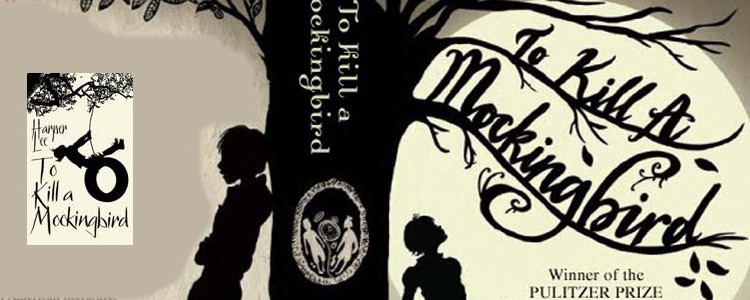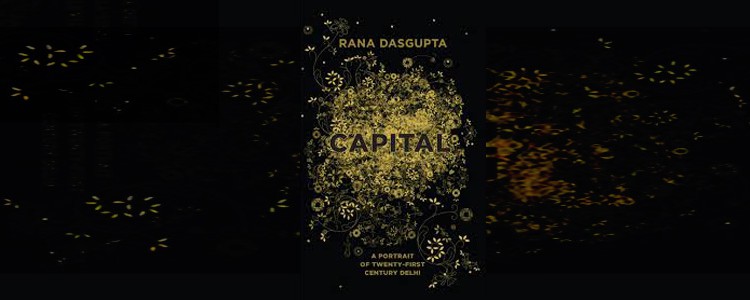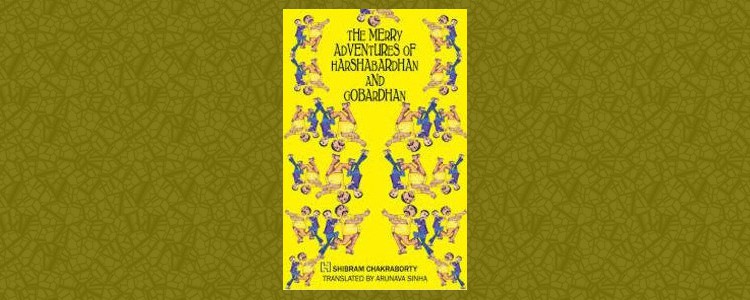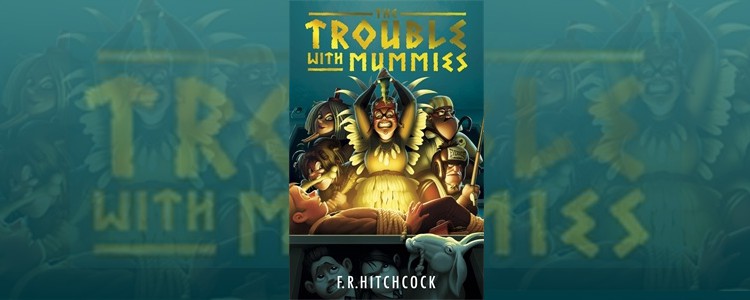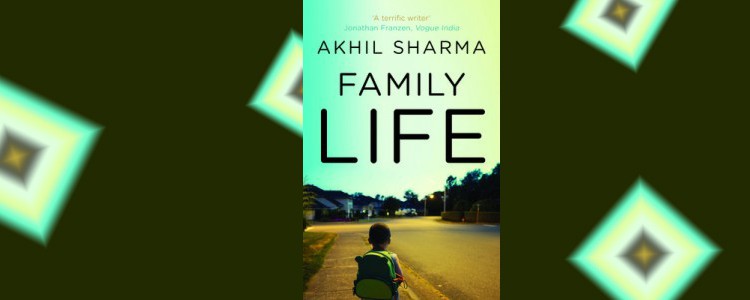 Travel writing has always had a special place in literature. Readers have been fascinated by stories of other places, cultures, people. In the past it was understandable when there were text-heavy descriptions of people, dresses, cities, architecture, food, vegetation and terrain. But today? To read modern-day travelogues when it is the “image age”, the most popular news feeds on social media platforms are photographs. It is akin to being immersed in a National Geographic-like environment 24×7. There are websites such as Flickr, Pinterest, Mashable, Tumblr, and YouTube, wonderful repositories of images and movie clips uploaded by institutions, media firms and individuals. So to read three books — Pallavi Aiyar’s Punjabi Parmesan: Dispatches from Europe in Crisis, Rana Dasgupta’s Capital: A Portrait of Twenty-First Century Delhi and Sam Miller’s A Strange Kind of Paradise: India Through Foreign Eyes — was an intriguing experience. Except for Sam Miller’s book that is peppered with black and white images laid within the text, the other two books are straightforward narratives. I would deem them as travelogues written in the “classical tradition” of relying solely upon the narrator/author taking the reader along a personal journey through a country/city different to the land of their birth. They make for a sharp perspective, intelligent analysis and just a sufficient mish-mash of history with a commentary on current social, political and economic developments, without really becoming dry anthropological studies. The writing style in all three books is lucid and easy.
Travel writing has always had a special place in literature. Readers have been fascinated by stories of other places, cultures, people. In the past it was understandable when there were text-heavy descriptions of people, dresses, cities, architecture, food, vegetation and terrain. But today? To read modern-day travelogues when it is the “image age”, the most popular news feeds on social media platforms are photographs. It is akin to being immersed in a National Geographic-like environment 24×7. There are websites such as Flickr, Pinterest, Mashable, Tumblr, and YouTube, wonderful repositories of images and movie clips uploaded by institutions, media firms and individuals. So to read three books — Pallavi Aiyar’s Punjabi Parmesan: Dispatches from Europe in Crisis, Rana Dasgupta’s Capital: A Portrait of Twenty-First Century Delhi and Sam Miller’s A Strange Kind of Paradise: India Through Foreign Eyes — was an intriguing experience. Except for Sam Miller’s book that is peppered with black and white images laid within the text, the other two books are straightforward narratives. I would deem them as travelogues written in the “classical tradition” of relying solely upon the narrator/author taking the reader along a personal journey through a country/city different to the land of their birth. They make for a sharp perspective, intelligent analysis and just a sufficient mish-mash of history with a commentary on current social, political and economic developments, without really becoming dry anthropological studies. The writing style in all three books is lucid and easy.
Pallavi Aiyar’s Punjabi Parmesan is a fascinating account of her travels through Europe from 2009 onward–at a time of economic gloom. It is part-memoir, part-journalism and part-analysis ( mostly economic) of what plagues Europe. It has anecdotes, plenty of statistics and footnotes, accounts of the meetings, conferences she was able to attend as journalist and have conversations with influential policy makers and politicians. After spending a few years in Beijing she moved to Brussels, so is able to draw astute observations about the decline in Europe. Having been a foreign correspondent for over a decade, reporting from China, Europe and South East Asia, mostly on business stories from the “frontline” of action, she has an insightful understanding of the depressing scenario in Europe. It is a book worth reading.
 Rana Dasgupta’s Capital is about Delhi, the capital of India. Delhi has been settled for centuries, but became the capital of British India in 1911. The first wave of migrants who formed the character of modern Delhi came soon after the country became Independent in 1947. Over the years Delhi grew but at a moderately slow pace. Twenty years after post-liberalisation ( 1991), Delhi transformed so rapidly that the old world, old rhythms and culture became quietly invisible. Delhi continued to be a melting pot of immigrants. It became a city synonymous with wealth, material goods, luxury and uncivil behaviour, bordering on crassness. It is a city of networking and networked individuals. Rana Dasgupta’s book is a meander through the city. He meets a lot of people — the nouveau riche, the first wave of migrant settlers post-1947, members of the old city families who bemoan the decline of tehzeeb in the city. Capital is a commentary on Delhi of the twenty-first century, a city that is unrecognisable to the many who have been born and brought up here. Rana Dasgupta moved to the city recently — over a decade ago–but this brings a clarity to his narrative that a Delhiwallah may or may not agree with. It certainly is a narrative that will resonate with many across the globe since this is the version many want to hear — the new vibrant India, Shining India, the India where the good days ( “acche din”) are apparent. There is “prosperity”, clean broad streets, everything and anything can be had at the right price here. It is a perspective. Unfortunately the complexity of Delhi, the layers it has, the co-existence of poor and rich, the stories that the middle classes have to share are impossible to encapsulate in a book of 400-odd pages. It is a readable book that captures a moment in the city’s long history. It will be remembered, discussed, critiqued, and will remain for a long time to come in the literature associated with Delhi. (The cover design by Aditya Pande is stupendous! )
Rana Dasgupta’s Capital is about Delhi, the capital of India. Delhi has been settled for centuries, but became the capital of British India in 1911. The first wave of migrants who formed the character of modern Delhi came soon after the country became Independent in 1947. Over the years Delhi grew but at a moderately slow pace. Twenty years after post-liberalisation ( 1991), Delhi transformed so rapidly that the old world, old rhythms and culture became quietly invisible. Delhi continued to be a melting pot of immigrants. It became a city synonymous with wealth, material goods, luxury and uncivil behaviour, bordering on crassness. It is a city of networking and networked individuals. Rana Dasgupta’s book is a meander through the city. He meets a lot of people — the nouveau riche, the first wave of migrant settlers post-1947, members of the old city families who bemoan the decline of tehzeeb in the city. Capital is a commentary on Delhi of the twenty-first century, a city that is unrecognisable to the many who have been born and brought up here. Rana Dasgupta moved to the city recently — over a decade ago–but this brings a clarity to his narrative that a Delhiwallah may or may not agree with. It certainly is a narrative that will resonate with many across the globe since this is the version many want to hear — the new vibrant India, Shining India, the India where the good days ( “acche din”) are apparent. There is “prosperity”, clean broad streets, everything and anything can be had at the right price here. It is a perspective. Unfortunately the complexity of Delhi, the layers it has, the co-existence of poor and rich, the stories that the middle classes have to share are impossible to encapsulate in a book of 400-odd pages. It is a readable book that captures a moment in the city’s long history. It will be remembered, discussed, critiqued, and will remain for a long time to come in the literature associated with Delhi. (The cover design by Aditya Pande is stupendous! )
 A Strange Kind of Paradise by Sam Miller is a gentle walk through the history of India, mostly written as a memoir. William Dalrymple’s blurb for the book is apt —a “love letter to India”. When India was celebrating its fiftieth year of Independence there was a deluge of books and anthologies reflecting, discussing the history of India. To read Sam Miller’s book is to get a delightful and idiosyncratic understanding of this large landmass known as India, a puzzle few have been able to fathom. The author is not perturbed by doing a history of the things he truly likes about the country or that he has been intrigued by conversations he probably had. To his credit he has done the legwork as expected of a professional journalist and discovered people, regions, histories, spaces, cities for himself. For instance he states he is an “aficionado of cemetries and of tombs”, but discovered “many Indian are scared of cemetries — except when they house the tombs of ancient emperors and their consorts. They often find my desire to visit graveyards a little strange, as if I were a necrophile or had a perverse desire to disturb the ghosts of the dead.”( p.232) A fascinating observation since it is true — cemeteries are strangely peaceful oasis of calm. If you say that out aloud in India, people will look at you in a strange manner.
A Strange Kind of Paradise by Sam Miller is a gentle walk through the history of India, mostly written as a memoir. William Dalrymple’s blurb for the book is apt —a “love letter to India”. When India was celebrating its fiftieth year of Independence there was a deluge of books and anthologies reflecting, discussing the history of India. To read Sam Miller’s book is to get a delightful and idiosyncratic understanding of this large landmass known as India, a puzzle few have been able to fathom. The author is not perturbed by doing a history of the things he truly likes about the country or that he has been intrigued by conversations he probably had. To his credit he has done the legwork as expected of a professional journalist and discovered people, regions, histories, spaces, cities for himself. For instance he states he is an “aficionado of cemetries and of tombs”, but discovered “many Indian are scared of cemetries — except when they house the tombs of ancient emperors and their consorts. They often find my desire to visit graveyards a little strange, as if I were a necrophile or had a perverse desire to disturb the ghosts of the dead.”( p.232) A fascinating observation since it is true — cemeteries are strangely peaceful oasis of calm. If you say that out aloud in India, people will look at you in a strange manner.
 Modern-day travelogues are many, available in print and digital. Two recent examples stand out. Anjan Sundaram’s Stringer: A Reporter’s Journey into Congo about his time in the African country. Fabulous stuff! Very reminiscent of Joseph Conrad’s writing ( especially his diaries) written in Africa. And the other is a recent essay that physicist and well-known speculative fiction writer, Vandana Singh wrote on her blog, “Alternate Visions: Some Musings on Diversity in SF” ( http://vandanasingh.wordpress.com/2014/05/27/alternate-visions-some-musings-on-diversity-in-sf/ ). It is a long and brilliant essay about her writing but also a though-provoking musing about diversity, different cultural experiences and writing — elements that are at the core of travel writing, have always been and continue to be.
Modern-day travelogues are many, available in print and digital. Two recent examples stand out. Anjan Sundaram’s Stringer: A Reporter’s Journey into Congo about his time in the African country. Fabulous stuff! Very reminiscent of Joseph Conrad’s writing ( especially his diaries) written in Africa. And the other is a recent essay that physicist and well-known speculative fiction writer, Vandana Singh wrote on her blog, “Alternate Visions: Some Musings on Diversity in SF” ( http://vandanasingh.wordpress.com/2014/05/27/alternate-visions-some-musings-on-diversity-in-sf/ ). It is a long and brilliant essay about her writing but also a though-provoking musing about diversity, different cultural experiences and writing — elements that are at the core of travel writing, have always been and continue to be.
6 July 2014
Pallavi Aiyar Punjabi Parmesan: Dispatches from a Europe in Crisis Hamish Hamilton, an imprint of Penguin Books, New Delhi, 2013. Hb. pp. 320 Rs. 599
Rana Dasgupta Capital: A Portrait of Twenty-First Century Delhi Fourth Estate, an imprint of HarperCollins, New Delhi, 2014. Hb. pp. 460 Rs. 799
Sam Miller A Strange Kind of Paradise: India Through Foreign Eyes Hamish Hamilton, an imprint of Penguin Books, New Delhi, 2014. Hb. pp. 430 Rs. 599
 Random House is delighted to announce that 54 years after it was first published Harper Lee’s To Kill a Mockingbirdwill be released as an ebook today for the first time.
Random House is delighted to announce that 54 years after it was first published Harper Lee’s To Kill a Mockingbirdwill be released as an ebook today for the first time.
